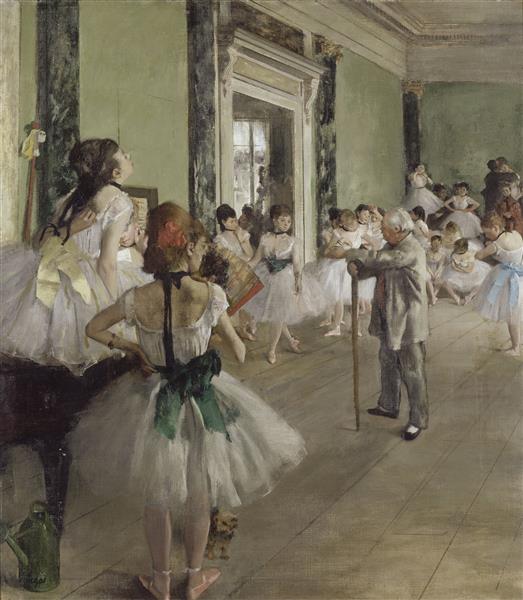The Ballet Class
Musée d'Orsay, Paris, France
Edgar Degas, 1874
Degas regularly went to the Paris opera house, not only as a member of the audience, but as a visitor backstage and in the dance studio, where he introduced by a friend who played in the orchestra. At that time, the opera was still housed in the rue Le Peletier and had not yet moved to the building designed by Garnier which was soon to replace it. From the 1870s until his death, Degas's favourite subjects were ballerinas at work, in rehearsal or at rest, and he tirelessly explored the theme with many variations in posture and gesture. More than the stage performance and the limelight, it was the training and rehearsals that interested him. Here the class is coming to an end – the pupils are exhausted, they are stretching, twisting to scratch their backs, adjusting their hair or clothes, an earring, or a ribbon, paying little heed to the inflexible teacher, a portrait of Jules Perrot, a real-life ballet master. Degas closely observed the most spontaneous, natural, ordinary gestures, the pauses when concentration is relaxed and the body slumps after the exhausting effort of practising and the implacable rigour of the class. The slightly raised viewpoint looking diagonally across the studio accentuates the vanishing perspective of floor boards. Paul Valéry wrote: "Degas is one of the very few painters who gave the ground its true importance. He has some admirable floors". This is all the more appropriate for dancers in that the parquet, which was moistened to prevent slipping, is their main work tool. And the ballet master beats time on the floor with his baton.
